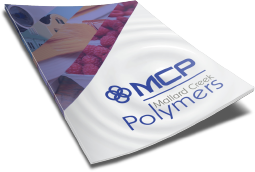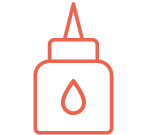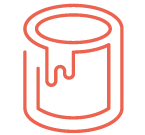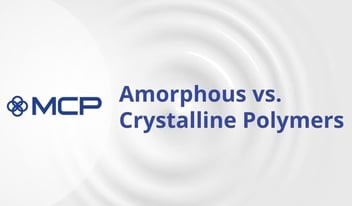
Tykote® Emulsion Polymers for low MVTR and OGR Barrier Coatings
Tykote® is a family of styrene-butadiene, styrene-acrylic and all-acrylic polymer products that may be used as bases for compounded functional coatings. Formulators apply Tykote® latex products on substrates used for a variety of packaging..
Tykote® is a family of styrene-butadiene, styrene-acrylic and all-acrylic polymer products that may be used as bases for compounded functional coatings. Formulators apply Tykote® latex products on substrates used for a variety of packaging applications to provide a barrier or other desired properties.
You’ll see coatings based on Tykote® emulsion polymers used in both food and non-food packaging applications. The functional coating, or barrier coat, blocks the passage of particular substances, including moisture vapor, water, oils, and grease, under a variety of conditions and temperatures. The purpose of a functional coating is to provide protection, a longer shelf-life, and better product and package integrity.
Tykote® emulsion polymers were developed from a comprehensive understanding of latex-based paper coating technology. One feature that makes Tykote® polymer emulsions stand out from other functional coating latexes is its ability to form a strong film extremely quickly. The second feature is the inherent stability the latex has with dry-added pigments. This quality makes for excellent coater runnability with highly filled barrier compound systems. Finally, Tykote® latexes are designed to impart a broad range of barrier properties including water resistance, grease resistance, and a nice balance of both. The result is a non-blocking, continuous, pinhole-free coating that is strong, reliable and easy to use.
The ingredients of Tykote® latexes comply with many FDA food contact regulations as well as global food compliance regulations, making them suitable for direct food applications.
Tykote® latexes are part of a full line of products designed to give various combinations of resistance to water, water vapor, oil and grease. These products are designed to be used in finished coatings by themselves or in combination with other ingredients.
Additives
Formulators often compound Tykote® latexes with inorganic pigments to enhance the barrier performance of the final compound. Typical pigments include special high aspect ratio kaolin clays, mica, and talc. These materials are highly crystalline and create a tortuous path for water vapor to travel as it passes through the membrane.
Formulators also use external crosslinkers used with Tykote® products, taking advantage of the carboxyl sites on the polymer backbone for crosslinking. The key here is to find a system that crosslinks quickly but doesn’t do so until the material is applied. Crosslinking is commonly used by formulators to lend blocking and abrasion resistance to the compound.
They also often use thickeners to give the coating the required rheology and water retention for application. The lowest amounts of thickener possible should be used to minimize effects on water resistance.
Formulators can also add slip additives to barrier coatings to ease the abrasive effects of the converting operations that follow coating. Corrugating, printing, die cutting, box formation and transport all represent points in the value chain where the coating can be abraded off.
Emulsified waxes may be added to boost the water resistance of the finished coating. While these materials are highly effective in improving both Cobb and Moisture Vapor Transmission Rate (MVTR), if misused, they will markedly change the surface energy of the coating and will affect gluing, recoatability, and the surface coefficient of friction.
Moisture and Water Resistance
There are several applications that require the functional coating to perform as a moisture barrier to seal in freshness and keep out moisture or humidity. The MVTR measures the effectiveness of the moisture barrier to prevent water vapor from being transmitted from one side of the substrate to the other. The value calculated is in either grams/100 in2/day or the metric equivalent in grams/m2/day. MCP uses the TAPPI 464 test method to calculate typical MVTR values. TAPPI 464 addresses high heat (100°F) and high humidity (90% RH) conditions (“jungle” conditions) The lower the MVTR, the better the moisture barrier properties.
Comparing MVTR Before and After Application of the Functional Coating
The Cobb test measures water resistance. This is a test method to measure how much water is absorbed into the paper or paperboard substrate. The unit of measure is grams per square meter measured over 10 minutes.
Excellent moisture and water resistance are very dependent upon a continuous and pinhole-free coating on a variety of substrates. There are a lot of variables to be considered to achieve the optimum MVTR and Cobb values for a specific application. Some of the critical variables are noted below:
• Porosity, smoothness and density of the base stock
• Total coating weight
• Number of coats or “bumps”
Grease and Oil Resistance
Grease and oil-resistant barriers for packaging applications share many of the same requirements as moisture and water-resistant barriers. Substrate, coating weight, and number of coats play important roles to obtain desired results. It’s critical to have a continuous, pinhole-free coating to prevent wicking or staining of the substrate. There are applications when grease resistance is critical, but water vapor must be allowed to escape to prevent the food product from getting soggy. For other applications, it’s also critical that good moisture resistance is built into the functional coating.
Test methods for oil, grease and solvent resistance include the 3M kit test and the TAPPI Turpentine Test. Both tests are good for checking for pinhole-free coatings, wicking, staining, and strike-through.
Test methods for oil, grease and solvent resistance include the 3M kit test and the TAPPI Turpentine Test. Both tests are good for checking for pinhole-free coatings, wicking, staining, and strike-through.
Mallard Creek Polymers is a leader in the development of functional coatings for a variety of market applications, for both food and non-food packaging. To get the right Tykote® product to address the needs of your next formulation, contact us today. Our service team can help you optimize your formulations by selecting the right Tykote®product to deliver attributes like water resistance, oil resistance, and more.

 Construction
Construction
 Nonwovens
Nonwovens
 Adhesives
Adhesives
 Textiles
Textiles
 Printing & Packaging
Printing & Packaging
 Paper
Paper
 Paints & Coatings
Paints & Coatings






